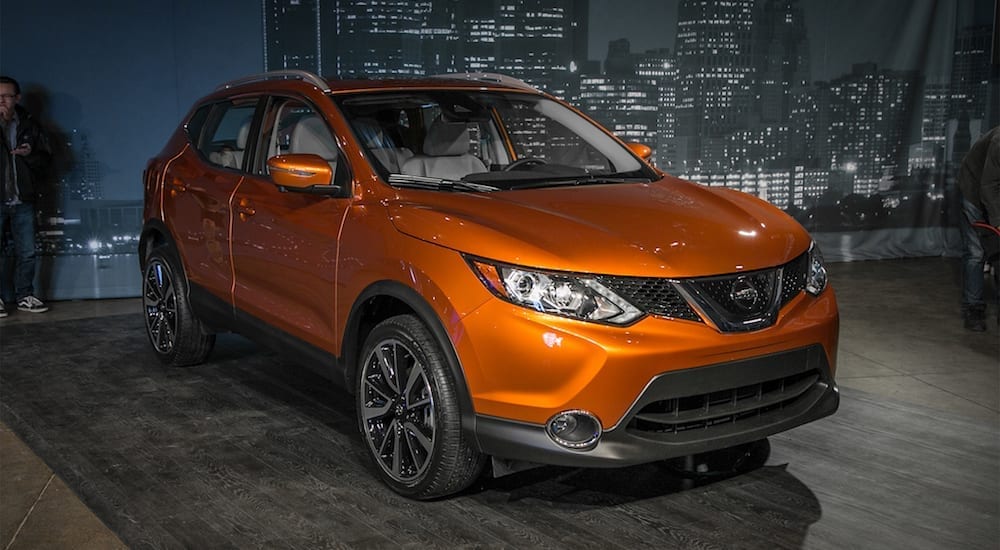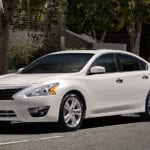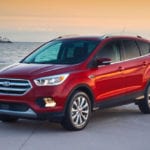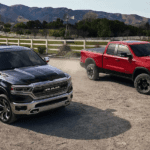You really have to wonder what Nissan was thinking when it released the Nissan Rogue Sport. First of all, its moniker would lead one to believe that it’s the sport version of the extremely popular Nissan Rogue. Great if you love the Rogue, not so great if you don’t. However, the Nissan Rogue Sport actually has very little in common with the Rogue, so not only is a total misnomer, it also limits the number of people who may be interested in the subcompact SUV to those who are already into the idea of owning a Rogue.
Not only is the name a problem, but really the whole car in general is an issue. The Rogue Sport is a “meh” car. It’s a take-it-or-leave-it model, offering nothing new or exciting to the subcompact SUV class. Think I’m being overly harsh? Let’s take a look at some key metrics and you’ll see that Nissan should have quit while it was ahead.
Performance
A good rule of thumb is that if you are going to give something a name like “Sport,” well, it should probably be fairly, I don’t know… sporty?
The Nissan Rogue Sport is not sporty. It’s sluggish. Powered by a 2.0-liter four cylinder engine, the Nissan Rogue Sport gets up to 141 horsepower and although it’s been praised for its somewhat agile handling and nimble maneuverability, there is very little in the way of speed or prowess. In short, it is sort of a boring car to drive with very little pickup and a slow, heavy feel to it, even when just cruising around town.
At least all that slow cruising won’t be costing you a fortune – the 2017 Nissan Rogue Sport gets pretty decent fuel economy for its class, with an EPA-estimated 25 miles per gallon in the city and 32 mpg on the highway.
Just for kicks, let’s take a look at the models that bookend the Nissan Rogue Sport. Big Brother Rogue gets 26 miles per gallon in the city and 33 on the highway out of its 2.5-liter four-cylinder (which pumps out 170 hp… still not the best, but better than the Sport), while the Nissan Juke gets 188 horsepower out of its 1.6-liter turbocharged four-cylinder. It also gets better fuel economy than either the Rogue or the Rogue Sport with an EPA estimated 28 mpg in the city and 32 on the highway.
When it comes to performance, I can see no reason why you wouldn’t opt for either the traditional Rogue or the funkier Juke – the Nissan Rogue Sport seems to fill a gap that doesn’t really need filling, at least when it comes to performance.
Interior
Okay, so performance is one thing, but let’s talk about interiors. The 2017 Nissan Rogue Sport comes standard with a five-inch audio display, a rearview camera, a four-speaker sound system, Bluetooth, cloth seating, a USB port and satellite radio – that’s all in the base model known as the S. It’s pretty basic, and you’re probably going to want to upgrade to one of the higher trims, of which Nissan offers three: the S, the SV, and the SL. There is also a variety of packages that you can add to your Rogue Sport, depending on which trim you opt for. However, keep in mind that the Rogue Sport starts at higher price point and offers fewer interior amenities than most of the other cars in its class – a huge drawback in such a competitive market.
The interior space is decent and the ride is comfortable, although backseat passengers who are used to the Rogue may feel a little cramped as the Rogue Sport is about 12 inches shorter than the Rogue. Cargo space in the Rogue Sport is actually some of the best in class, so that’s something to consider if you need to haul a lot of stuff around. The regular cargo hold in the Sport is 22.9 cubic feet, which grows to 61.1 if you collapse the second row seats down. Nissan also offers the cool Divide-N-Hide cargo system, which utilizes hidden space under the cargo floor to increase your storage capacity.
How does the Rogue Sport stack up against its siblings when it comes to cargo space? Well, the larger Rogue gets 39.3 cubic feet of cargo space behind its second row seats, although if you opt for the third row configuration, that shrinks to 9.4 cubic feet. However, if you fold all of the rows down, you’ve got 70 cubic feet of space to fill – some of the best in class cargo room.
And the Juke? Well, it’s a little more snug. You’ll get 10.5 cubic feet of cargo space with the second row seats up, and 35.9 cubic feet if you fold them down. If you’re in the market for serious cargo room, you’re going to want to consider the Rogue.
Price
You’re probably thinking that by going for the Rogue Sport instead of the Rogue, you’ll save a bundle of cash. Unfortunately, that’s just not the case. The base model 2017 Rogue Sport starts at $21,420. The base model Rogue? $23,820. Sure, it’s a $2,400 dollar difference, and trust me, I know that every penny counts, but in this case you’ll see much more value in spending the extra money to get a better car.
What about the Juke? The Juke starts at $20,250. So if you’re looking to save a little money and want something smaller than the Rogue, why not give the Juke a try?
Rely on the Rogue
There’s one thing we haven’t touched on yet and it’s important: the 2017 Nissan Rogue Sport is new. Like, brand, brand new. First model of its kind. Which means there are probably going to be some kinks that need to be worked out. It hasn’t even had time to be tested for predicted reliability by J.D. Power. However, we can tell you that the Nissan Rogue gets a three out of five and the Juke gets a 2.5 out of five – scores that are mediocre at best. It’s absolutely worth it to wait a year or two before jumping into a Rogue Sport, even if it’s just to give Nissan some time to work out any kinks. If you’re really excited about driving a Nissan, we highly suggest that you go with the extremely popular Rogue over the Rogue Sport.




